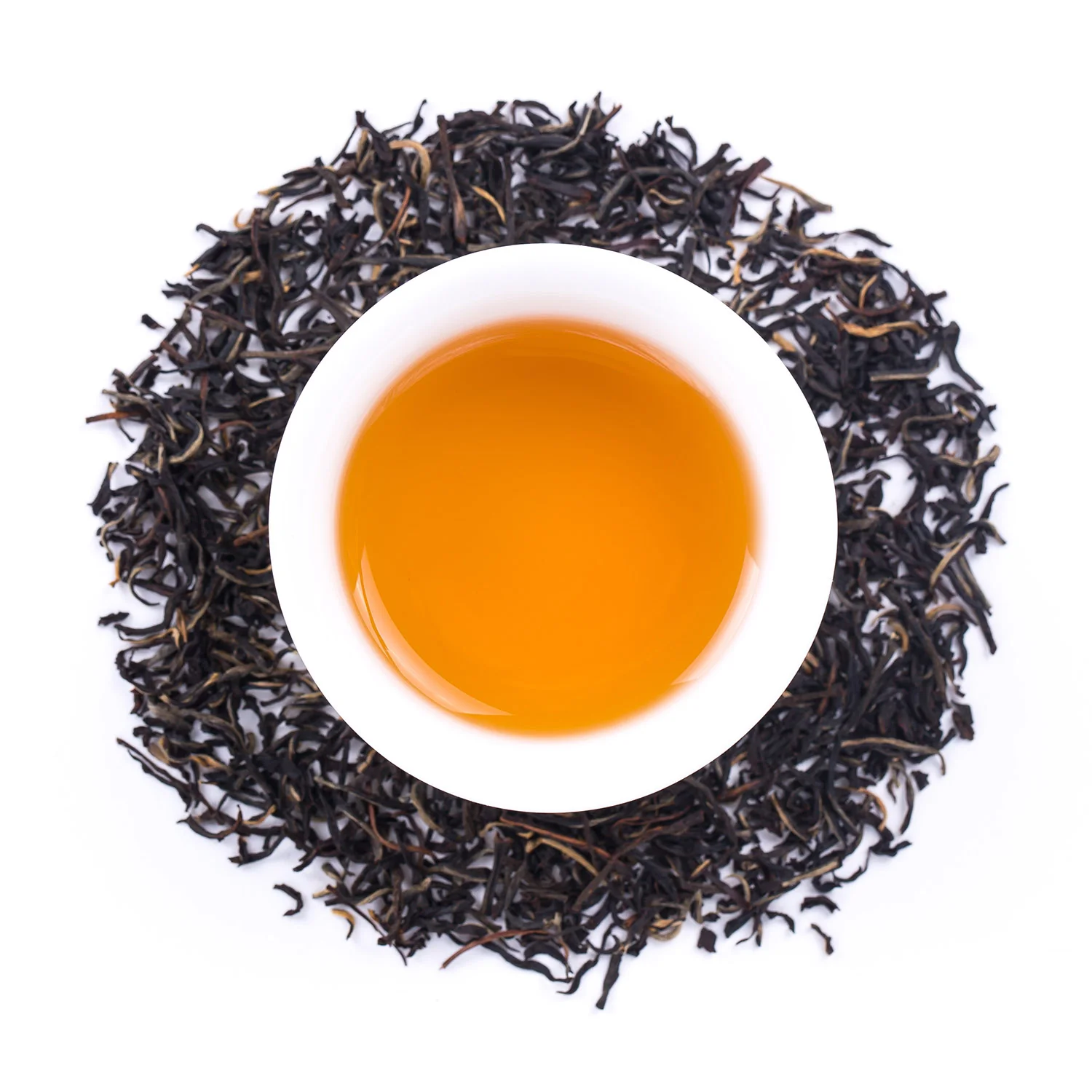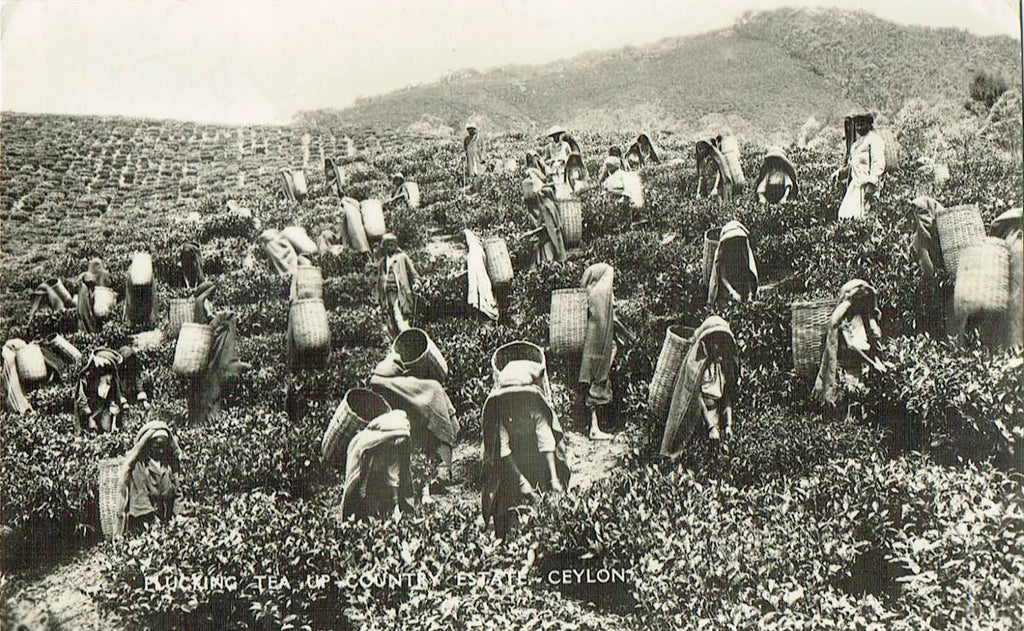
Unlocking the Secrets of Ceylon Tea Color: A Journey Through the Vibrant Shades and Tantalizing Tastes
Welcome to a journey through the vibrant shades and tantalizing tastes of Ceylon tea. In this article, we will unlock the secrets behind the captivating colors that make Ceylon tea so visually appealing, as well as the unique flavors that make it a favorite among tea enthusiasts worldwide.
Ceylon tea, known for its bright and diverse palette, ranges from delicate light amber to deep, rich mahogany hues. Each shade tells a story of the region, altitude, and processing methods used to create the tea.

But it's not just the color that sets Ceylon tea apart; it's also the tantalizing tastes. From the delicate and floral notes found in high-grown teas to the robust and full-bodied flavors of low-grown teas, Ceylon tea offers a wide range of taste profiles to suit every palate.
Join us as we delve into the fascinating world of Ceylon tea color and flavor, exploring the factors that contribute to their diversity and uncovering the secrets that make this tea so unique. Whether you're a tea connoisseur or simply curious, this journey is sure to leave you craving a cup of the extraordinary Ceylon tea.
The history of Ceylon tea production
Ceylon tea, also known as Sri Lankan tea, has a rich history that dates back to the early 19th century. The British introduced tea cultivation in Sri Lanka in the 1820s, and it quickly became one of the country's most important industries. Today, Sri Lanka is the world's fourth-largest tea producer, and Ceylon tea is renowned for its quality and unique taste.

The tea industry in Sri Lanka has faced many challenges over the years, including political unrest, weather-related issues, and economic fluctuations. However, despite these obstacles, the industry has continued to thrive and evolve, with tea production methods and technologies constantly improving.
In early 2023 the country suffered an economic meltdown that resulted in violent demonstrations on the streets. There were shortages of food, fuel and medicine unprecedented in its modern history. (You can read about it in one of our blog posts.) Currently, Sri Lanka appears to have acquired some level of much needed stability.
Sri Lanka's tea industry remains a vital part of the country's economy, providing employment for thousands of people and contributing significantly to the nation's GDP.
The different grades of Ceylon tea
Ceylon tea is classified into several grades based on the size and quality of the tea leaves. The grades range from whole leaf teas to broken leaf teas, and finally, to fannings and dust, which are used for tea bags.
The highest quality Ceylon teas are whole leaf teas, which are made from the youngest and most delicate tea leaves. These teas are handpicked and carefully processed to maintain their delicate flavor and aroma. Whole leaf teas are usually sold as loose leaf teas and are more expensive than other grades.
Broken leaf teas are made from larger, more mature tea leaves and are less expensive than whole leaf teas. They are often used in tea bags and have a bolder flavor than whole leaf teas.
Fannings and dust are the lowest grades of Ceylon tea and are used mainly for tea bags. They are made from the smallest, lowest quality tea leaves and have a stronger, more bitter taste than other grades.
The impact of location and elevation on Ceylon tea color and flavor
One of the most significant factors that contribute to the color and flavor of Ceylon tea is elevation. Sri Lanka's tea-growing regions are divided into three main categories based on altitude: low-grown, mid-grown, and high-grown.
Low-grown teas are grown at elevations of up to 2,000 feet and have a robust, full-bodied flavor and a dark color.
Mid-grown teas are grown at elevations between 2,000 and 4,000 feet and have a milder flavor and a lighter color than low-grown teas. High-grown teas are grown at elevations above 4,000 feet and have a delicate, floral flavor and a light color.
There are seven recognized "tea districts" in Sri Lanka. Besides varying elevations these districts have distinct weather patterns that impact the character of the tea produced.
The seven districts are:
Nuwara Eliya stands out as the most renowned tea-growing region in Sri Lanka, characterized by its rugged terrain and the highest average elevation among all the districts. This unique combination of high altitudes and cooler temperatures gives birth to teas with an exceptional and delightful aroma.
Dimbula: Nestled between Nuwara Eliya and Horton Plains, the district of Dimbula is renowned for its "high grown" teas, where every estate flourishes at altitudes surpassing 1,250 meters (or 4,000 feet). The intricate terrain of this region nurtures diverse microclimates, leading to nuanced flavor profiles, occasionally blending hints of jasmine with the aroma of cypress. Yet, each of these teas is united by the unmistakable Dimbula essence, gracing your cup with a refined golden-orange infusion and a profoundly refreshing, mellow character.
Uva: This is where the breezes of both the northeast and southwest monsoons intermingle producing a tea with a unique and exotic aroma. It was amidst the tea plantations of Uva that Thomas Lipton, the prominent Victorian figure, convinced the English and the Americans to embrace Ceylon tea. The mellow and velvety flavor of Uva tea, once savored, stands out with unmistakable distinction, leaving an enduring impression.
Uda Pussellawa district, located in close proximity to Nuwara Eliya, frequently draws comparisons to its neighbor's tea. However, it distinguishes itself by its darker infusion, featuring a subtle pinkish hue and a remarkable depth of flavor, accompanied by exquisite tanginess. The colder climate towards the end of the year is said to infuse a subtle note of rose into the tea's bouquet, enhancing its medium body and understated character.
Kandy district, where the tea industry took root in 1867, makes for "mid-grown" tea due to their cultivation ceiling of 1,300 meters. The flavor profiles of these teas vary based on the altitude and the degree of protection from monsoon winds. What unites them all, however, is their exceptional flavor. Kandy teas offer a vibrant infusion boasting a captivating coppery hue, known for their robust and intensely full-bodied character.
Ruhuna district, a picturesque region, is classified as "low-grown" due to its cultivation at altitudes not surpassing 600 meters. This district encompasses vast sub-regions, spanning from coastal plains to the southern fringes of the Sinharaja Rain Forest. The combination of the region's soil and low-lying estates fosters rapid growth of the tea bushes, resulting in the development of long and exquisite tea leaves. The hallmark of Ruhuna's tea offerings is its full-flavored black tea, a specialty that is distinctly unique to this region. Ruhuna's tea factories produce an array of leaf styles and sizes, including the highly sought-after "tips."
Sabaragamuwa, the largest district in Sri Lanka, features low-grown teas, as its estates span from sea level to 610 meters in elevation. Nestled between the southern Sinharaja rainforest and the wilderness surrounding Adam's Peak in the north, Sabaragamuwa nurtures tea bushes that grow rapidly, resulting in gracefully long leaves. The liquor produced mirrors that of Ruhuna teas, characterized by a rich dark yellow-brown hue with a subtle reddish undertone. However, the aroma distinguishes itself, offering a hint of sweet caramel that, while not as intense, exudes an exceptionally stylish allure.
New Vithanakande, the tea estate, from where our Ceylon Black comes from is located in the Sabaragamuwa district. You can certainly get a taste of lovely caramel in the tea!

Ceylon tea and health benefits
Ceylon tea is not only delicious but also packed with health benefits like any other high quality tea. Studies have shown that drinking tea can have many health benefits.
Ceylon tea is rich in antioxidants, which help to protect the body against free radicals and reduce the risk of cancer and other diseases.* It also contains caffeine, which can help to improve mental alertness and concentration.
Some scientific studies have also shown that tea can help to lower cholesterol levels and reduce the risk of heart disease. Drinking tea regularly can also help to boost the immune system and improve overall health and wellbeing."
**These statements have not been endorsed by the FDA.
Brewing the perfect cup of Ceylon tea
To get the most out of your tea, it's important to use high-quality, loose-leaf tea and to brew it at the right temperature and for the right amount of time.
To brew a perfect cup of Ceylon tea, start by heating water to the recommended temperature. Pour the water over the tea leaves and let it steep for the recommended time. Generally, high-grown teas should be steeped for 2-3 minutes, while low-grown teas should be steeped for 3-4 minutes.
Once the tea has steeped, strain the leaves and pour the tea into a cup. Add milk and sugar to taste, if desired.
Celebrating the diversity of Ceylon tea
Ceylon tea is a true treasure, with its vibrant colors and tantalizing tastes. From the delicate and floral notes of high-grown teas to the robust and full-bodied flavors of low-grown teas, Ceylon tea offers something for every tea lover.
As we've seen, the color and flavor of Ceylon tea are influenced by many factors, including elevation, processing method, and time of year. By understanding these factors, we can better appreciate the diversity and complexity of this extraordinary tea.
So, next time you enjoy a cup of Ceylon tea, take a moment to savor the color and taste, and remember the rich history and traditions that have made this tea so beloved around the world.

